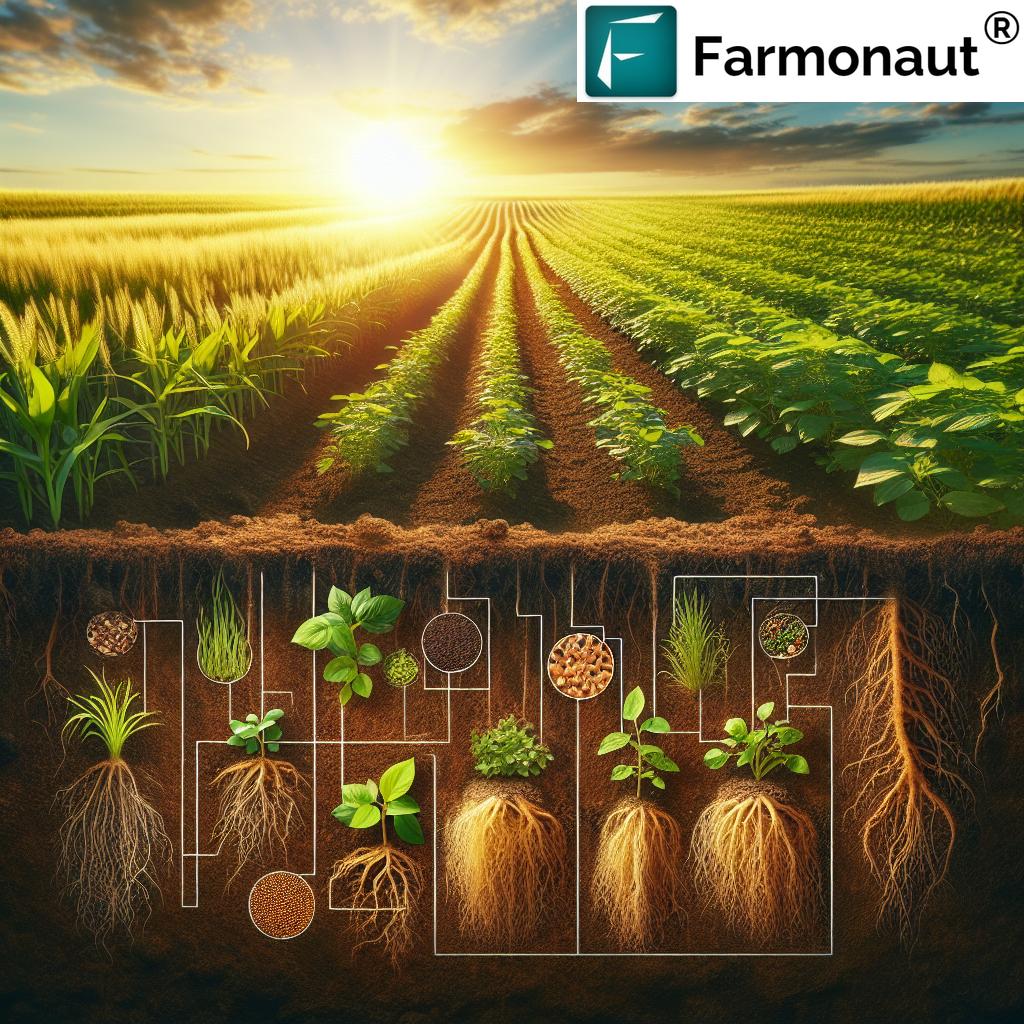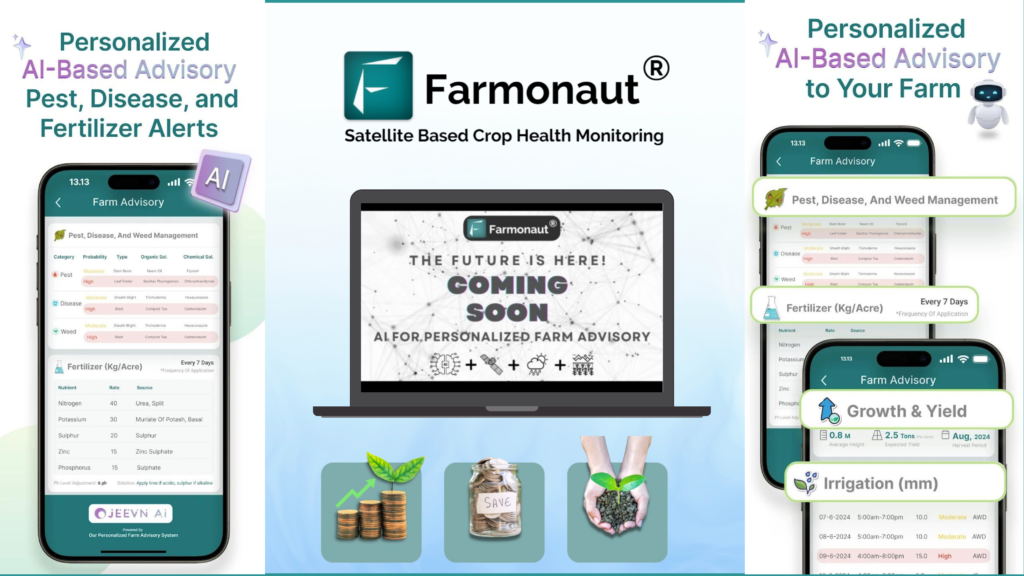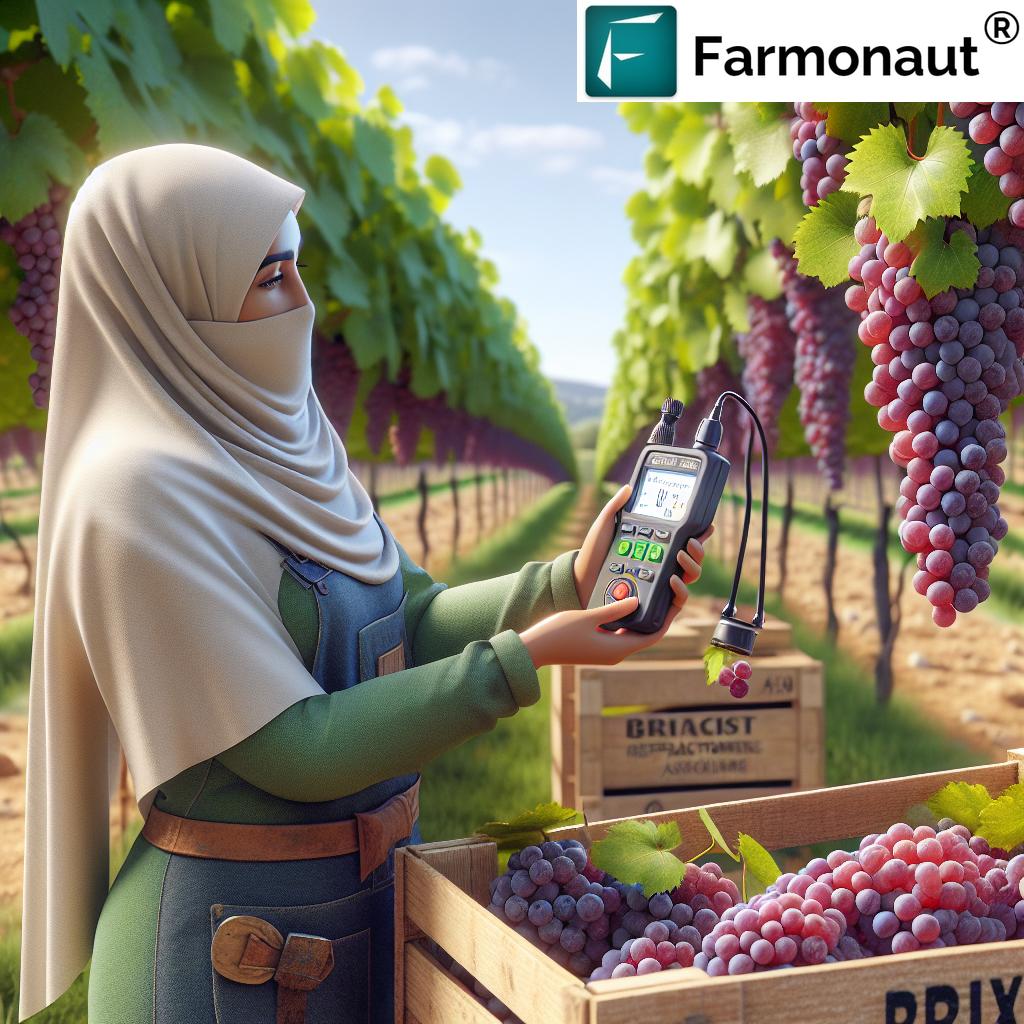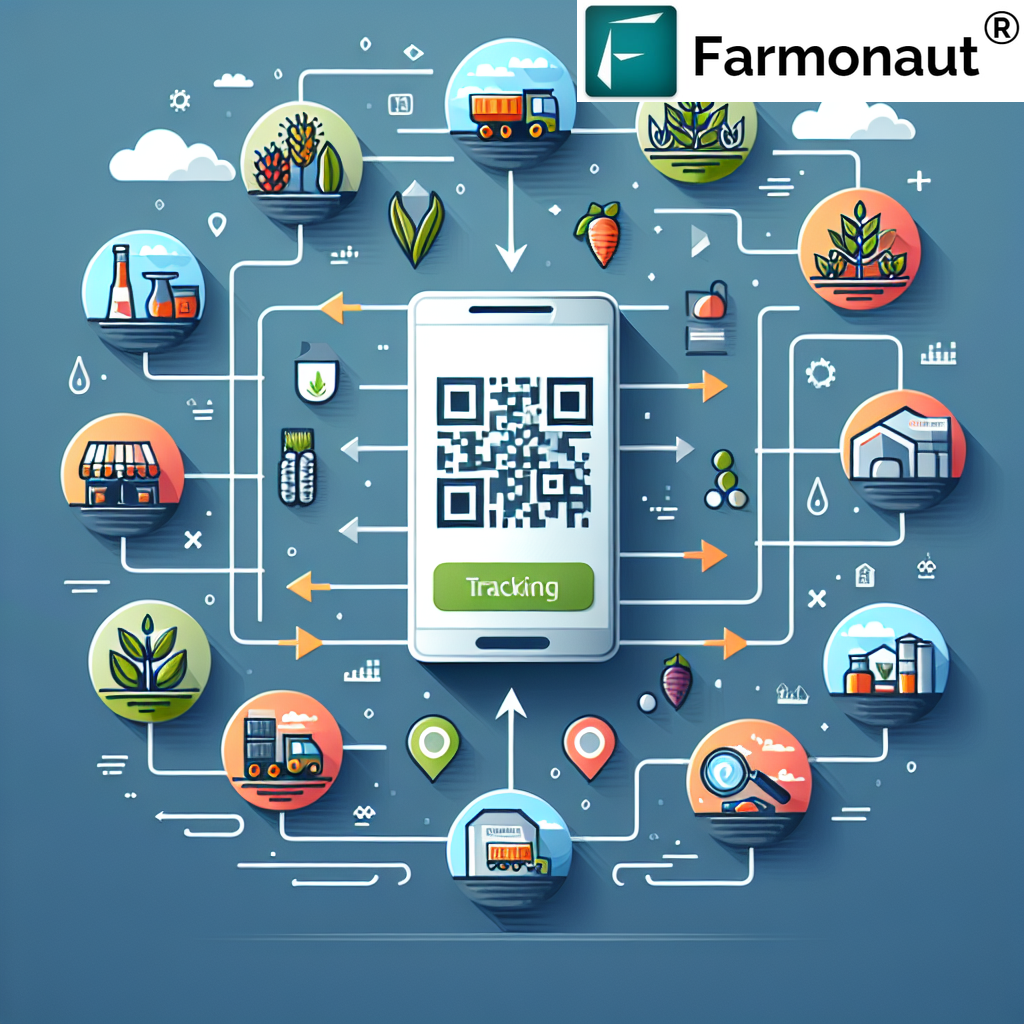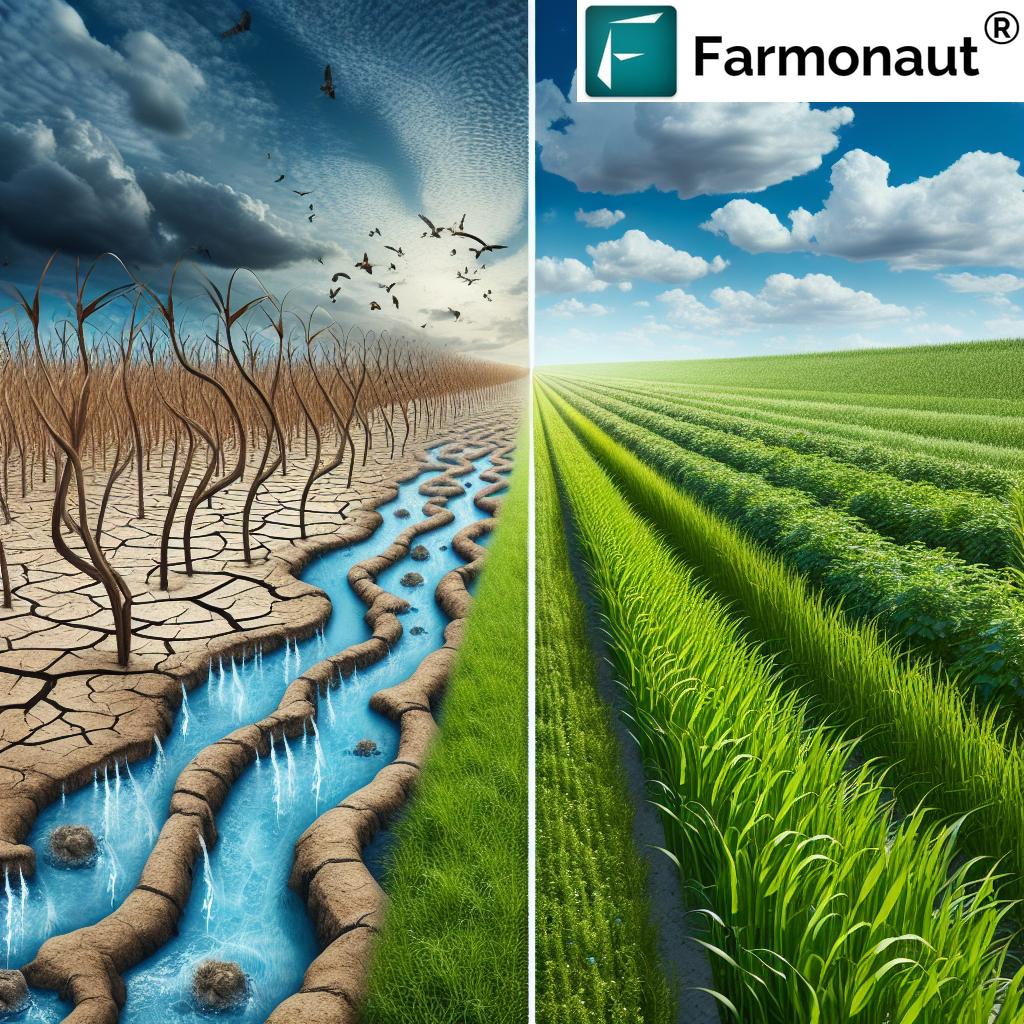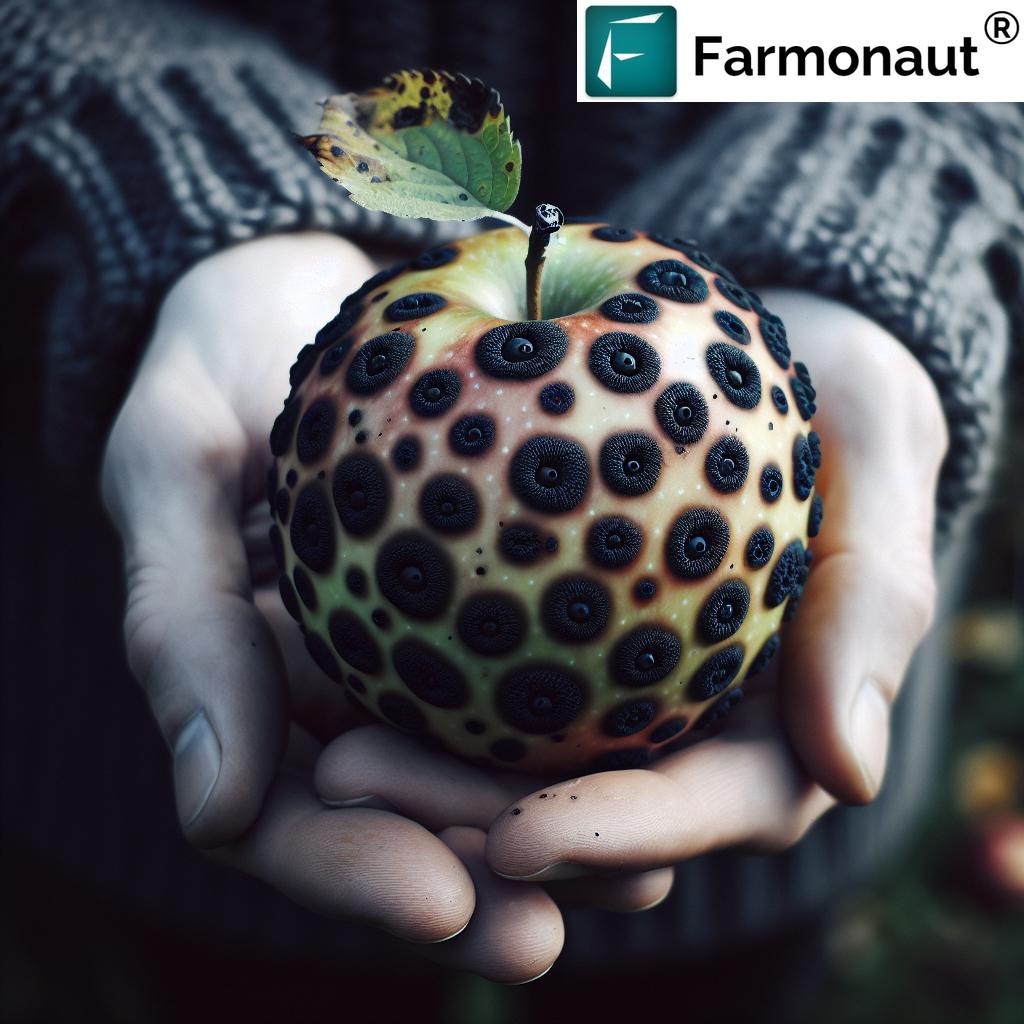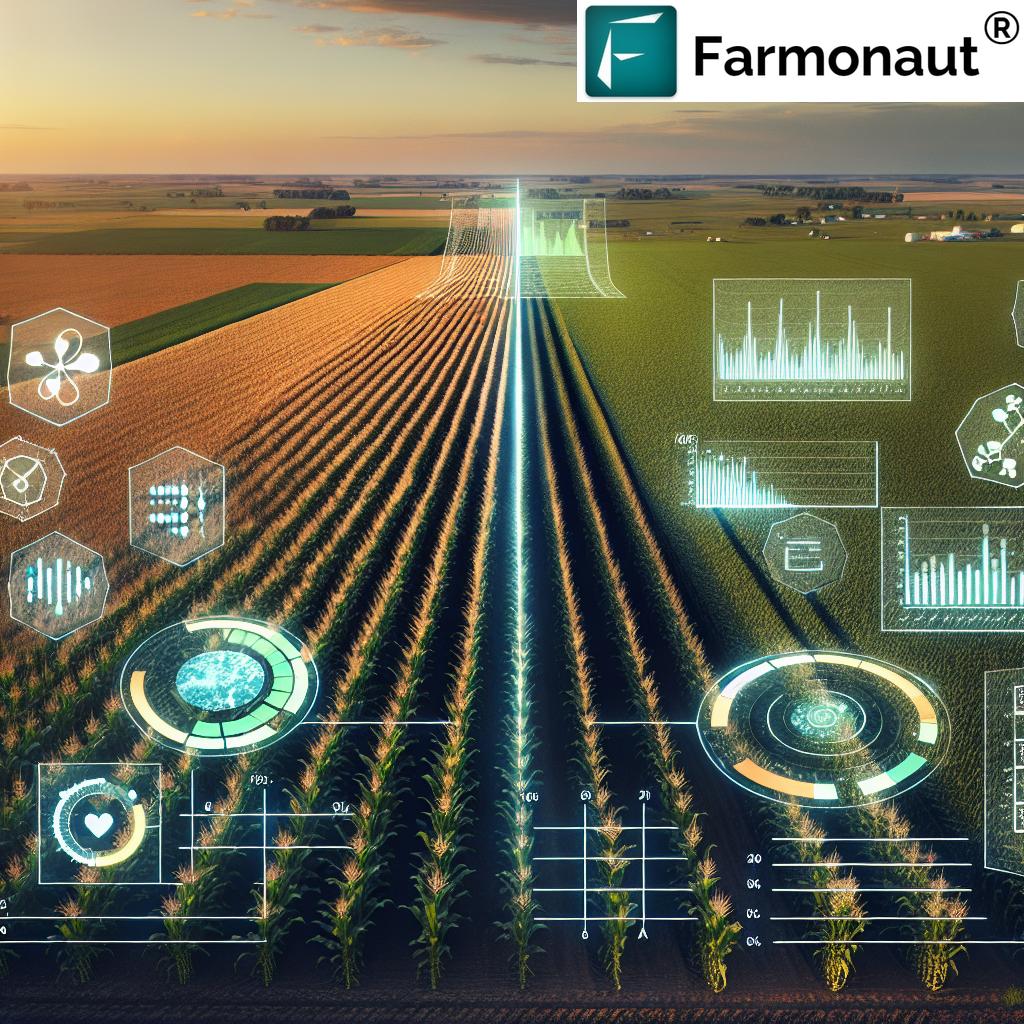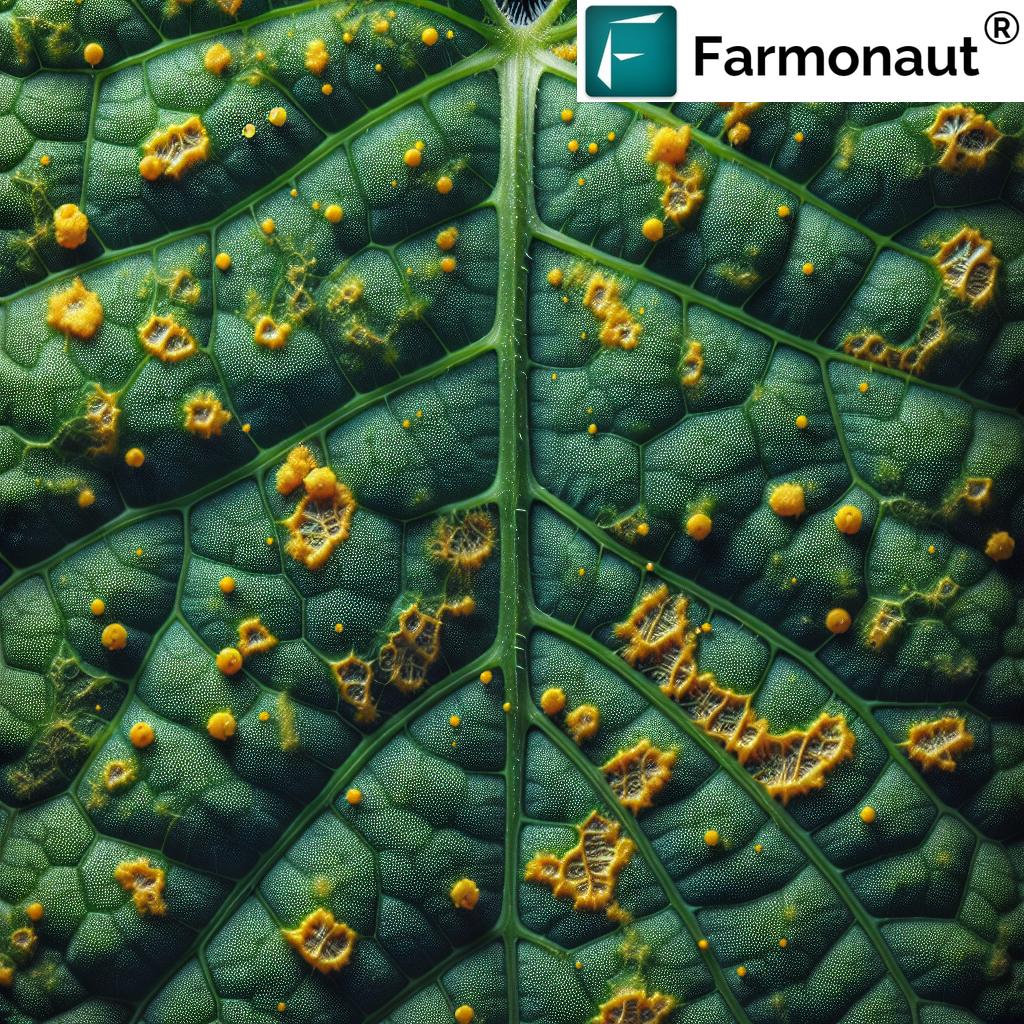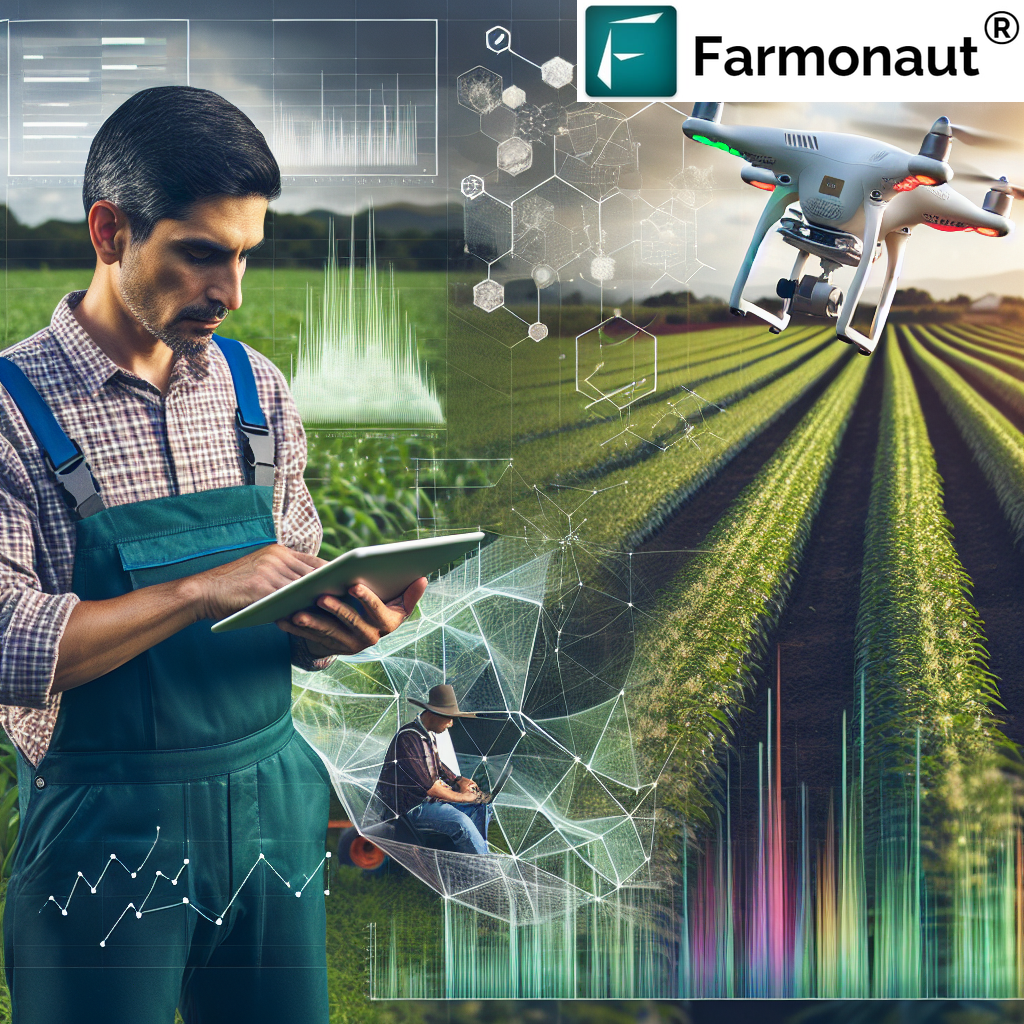Table of Contents
- Understanding Crop Health
- Key Factors Influencing Crop Health
- Crop Health Mastery: 7 Proven Strategies
- Strategies Comparison Table
- Best Practices for Crop Health Management
- Technology Integration for Enhancing Crop Yields
- Farmonaut: Leveraging AI and Satellite Monitoring
- Farmonaut Subscriptions
- Frequently Asked Questions (FAQs)
- Conclusion: Crop Health Mastery
“Precision irrigation can increase crop yields by up to 20% while reducing water usage by 30%.”
Crop Health Mastery: 7 Proven Strategies for Thriving Yields
Maintaining optimal crop health is fundamental for achieving high yields, ensuring sustainable agricultural practices, and fostering economic growth for farmers. When our crops flourish, they become more resilient against environmental stresses, diseases, and pests, leading to improved productivity and quality. In this comprehensive guide, we explore the primary factors influencing crop health and outline effective, proven strategies every grower and agricultural professional can implement for robust harvests.
Understanding Crop Health: Key Factors Influencing Crop Health
Crop health refers to the overall well-being of our plants, encompassing growth, development, and resistance to threats like pests and diseases. Healthy crops display robust stem and root systems, vibrant foliage, efficient nutrient uptake, and enhanced resilience to environmental factors. Let’s explore the core drivers of crop vitality:
- Soil Health – The biological, chemical, and physical integrity of soil underpins every aspect of crop success.
- Water Management for Crops – Balancing irrigation to prevent root diseases and drought stress is vital.
- Integrated Pest Management (IPM) – Sustainable control of insects and diseases with minimal chemical use.
- Crop Rotation and Diversity – Prevents pest cycles, conserves nutritional balance, and enhances adaptation.
- Disease Resistant Crop Varieties – Utilizing resilient genetics minimizes vulnerability to local disease pressures.
- Technological Integration – Leveraging satellite monitoring, IoT sensors, and AI in crop monitoring for early detection and informed, data-driven management.
Crop Health Mastery: 7 Proven Strategies for Thriving Yields
To enhance crop yields and ensure long-term sustainability, our approach must be holistic and integrative. Below, we detail each of the seven cornerstone strategies in crop health management—combining time-tested best practices with cutting-edge technologies.
- Soil Health Improvement
- Integrated Pest Management (IPM)
- Precision Irrigation and Water Management
- Adopting Disease Resistant Crop Varieties
- Crop Rotation and Diversity
- Technological Integration (Remote Sensing in Agriculture, IoT, AI in Crop Monitoring)
- Early Detection and Data-Driven Monitoring
Strategies Comparison Table: 7 Crop Health Mastery Approaches
| Strategy | Description | Estimated Yield Improvement (%) | Implementation Difficulty |
|---|---|---|---|
| Soil Health Improvement | Enhancing organic matter, preventing compaction, optimizing nutrient cycles for robust plant growth and root development | 10–20% | Easy |
| Integrated Pest Management | Combining biological, cultural, mechanical, and targeted chemical methods for responsible pest and disease management | 8–17% | Moderate |
| Precision Irrigation and Water Management | Adopting efficient irrigation systems, monitoring moisture, and tailoring schedules to minimize waste and boost resilience | 10–20% | Moderate |
| Adopting Disease Resistant Crop Varieties | Selecting and planting seeds bred for resistance to prevalent local pests and diseases | 7–15% | Easy |
| Crop Rotation and Diversity | Eliminating pest cycles and nutrient depletion by regularly rotating crops with varying requirements | 8–13% | Easy |
| Technological Integration | Implementing AI, remote sensing, IoT sensors, and satellite-based monitoring for proactive crop health management | 12–22% | Advanced |
| Early Detection & Data Monitoring | Frequent, real-time field data analysis for identifying diseases, pest outbreaks, and nutrient deficiencies | 9–15% | Moderate |
“Integrated pest management reduces pesticide use by 50%, maintaining crop health and environmental safety.”
Best Practices for Crop Health Management
1. Soil Health Management: The Bedrock of Crop Productivity
- Diversify Planting to Enhance Soil Biota: Rotating and intercropping with a variety of plant species naturally fosters a dynamic community of soil organisms. This microbial diversity is essential for nutrient cycling, disease suppression, and organic matter stability.
- Maintain Constant Soil Cover: Cover crops and mulching shield the soil from erosion, conserve moisture, stabilize temperature ranges, and deter weeds—contributing to consistent, healthy plant growth.
- Reduce Compaction and Improve Drainage: Avoid over-tilling and heavy machinery on wet fields. Healthy soil structure supports robust root systems and efficient water movement.
- Regular Soil Testing: Know your soil’s pH, organic content, and nutrient status. Data-driven amendments optimize fertility for maximal crop health and yield.
- Enrich with Organic Matter: Compost and green manure additions provide slow-release nutrients and improve soil tilth, boosting plant resilience and productivity.
2. Integrated Pest Management (IPM): Sustainable Protection Against Pests
- Biological Control: Encourage beneficial insects (e.g., ladybugs, parasitic wasps) and soil organisms, which naturally regulate pest populations.
- Cultural Practices: Adjust planting dates, employ crop rotation, and use clean seed stock to disrupt pest and disease cycles.
- Mechanical and Physical Controls: Remove weeds regularly, and use barriers or traps to prevent pest infestations.
- Targeted Chemical Intervention: Where necessary, use pest-specific, environmentally safe chemicals in minimal, precise dosages.
- Continuous Monitoring: Field scouting and use of modern sensors allow for early identification of pest populations, drastically reducing crop loss.
Did you know? Farmonaut’s Carbon Footprinting Platform helps agricultural businesses monitor and reduce their environmental impact while supporting data-driven pest management strategies for a sustainable future!
3. Precision Irrigation & Water Management for Crops
- Adopt Efficient Irrigation Systems for Agriculture: Switching to drip irrigation or precision sprinklers minimizes evaporation, applies water directly to root zones, and reduces disease risk from wet foliage.
- Monitor Soil Moisture: State-of-the-art moisture sensors provide real-time field data, enabling us to optimize irrigation timing and avoid overwatering or underwatering.
- Schedule Watering Based on Weather and Crop Stages: Adjusting schedules with the help of weather sensors, forecasts, and local crop data ensures resilience even during drought or heavy rainfall.
- Promote Water Conservation: Use mulches, cover crops, and reduced tillage to minimize surface evaporation—protecting soil against water stress.
4. Adopting Disease Resistant Crop Varieties
- Select Locally Adapted Seeds: Choose crop varieties with proven resistance to prevalent local diseases and pest pressures.
- Use Certified, High-Quality Seed Stock: Reduces introduction of new pathogens and ensures vigorous plant development.
- Rotate Resistant Varieties: Prevent pathogen buildup by alternating resistant types within cropping cycles.
5. Crop Rotation and Diversity
- Alternate Crop Families: Rotate between cereals, legumes, oilseeds, and vegetables to disrupt pest and disease cycles and prevent nutrient depletion.
- Intercrop with Legumes: Boost soil nitrogen naturally, benefiting subsequent crops and reducing reliance on chemical fertilizers.
- Plant Off-Season Cover Crops: Mustards, clovers, or rye as cover crops suppress weeds, guard against erosion, and improve soil structure.
Example Crop Rotation Plan:
- Year 1: Maize (cereal)
- Year 2: Soybean (legume)
- Year 3: Wheat (cereal)
- Year 4: Mustard (cover crop)/Fallow
Explore more about sustainable farmland management with Farmonaut’s
Large Scale Farm Management Solutions.
6. Technological Integration: AI in Crop Monitoring, IoT, and Remote Sensing in Agriculture
- Satellite Imagery and Remote Sensing: Leverage multispectral and thermal imagery for precise, field-wide health analysis, identifying disease, nutrient stress, or moisture deficit before visible symptoms appear.
- IoT Sensors for Field Monitoring: Deploy soil, weather, and moisture sensors to collect granular data on field microclimates—enabling micro-irrigation and targeted fertilization.
- AI & Machine Learning: AI-driven analytics process real-time data, provide predictive insights (such as disease outbreak warnings), and optimize decision-making for every aspect of farm management.
- Mobile and Cloud Access: Tap into apps and web dashboards for instant access to farm health data, trends, and recommendations—wherever we are!
- Blockchain Traceability: Ensure transparent, tamper-proof farm-to-plate records for all stakeholders in the agricultural supply chain. Learn more about Product Traceability benefits for your farm business.
7. Early Detection & Data-Driven Crop Monitoring
- Regular Field Walks and Digital Scouting: Combine our expertise with real-time data, remote sensing, and AI models for immediate identification of pest, disease, or nutrient stressors.
- Integrated Dashboards: Use comprehensive farm management platforms (like Farmonaut) for visualizing crop health, comparing historical trends, and receiving tailored action alerts.
- Optimize Input Application: Early detection ensures precise, minimal use of chemicals, fertilizers, and water—boosting both profits and crop safety.
Technology Integration for Enhancing Crop Yields
Why Should Growers Prioritize Remote Sensing in Agriculture?
- Broad-Scale Monitoring: Satellite imagery gives farm-wide or region-wide overviews for detecting variabilities in crop health, rooting out issues invisible at ground level.
- Real-Time Alerts: AI in crop monitoring delivers automated disease, pest, and moisture stress warnings—enabling us to act before threats escalate.
- Efficiency and Sustainability: Redemption of resources—water, fertilizer, and chemicals—through data-informed management translates into lower costs and higher sustainability.
What is the Role of AI & IoT in Modern Crop Health Management?
- Precision: AI systems like Farmonaut’s Jeevn AI personalize advisory based on locality, soil type, and weather, maximizing yield for every unique context.
- Reliability: IoT sensors reliably monitor field parameters, aiding in precise watering, nutrient application, and early warning signals for diseases.
- Accessibility: Farmonaut’s dashboard and mobile apps make advanced API-based remote data available to any farm, anytime, anywhere.
Looking for seamless technology adoption? Integrate with Farmonaut’s API or visit the Developer Docs to automate workflows, receive site-specific weather intelligence, and scale your operation digitally.
Farmonaut: Leveraging AI and Satellite Monitoring for Crop Health Mastery
Farmonaut is a trailblazer in crop health management—making precision agriculture affordable and accessible to growers, agribusinesses, and government institutions. What sets Farmonaut apart?
- Satellite-Based Crop Health Monitoring: We deliver actionable data from NDVI vegetation indices to precise soil moisture maps, empowering accurate decisions on irrigation, fertilization, and pest management for enhancing crop yields.
- AI-Driven Advisory: The Jeevn AI system analyzes field and satellite data to recommend optimal actions for watering, nutrition, and disease resistance—all personalized for local crops and climatic conditions.
- Blockchain Traceability: Our innovative digital traceability solutions ensure every harvest and product is verifiable from farm to fork. Learn how this boosts trust and value in your supply chain.
- Resource and Fleet Management Tools: We enable agribusinesses to optimize machinery, logistics, and field operations. For details, discover Farmonaut’s Fleet Management Solutions.
- Carbon Footprinting: Tools for tracking and minimizing environmental impact help achieve regulatory compliance and sustainability goals. Explore carbon tracking for your farm business.
- Crop Loan & Insurance Verification: By providing remote satellite verification, we help financial institutions provide timely, fraud-resistant crop loans and insurance. Read more about satellite-based loan and insurance verification.
Farmonaut’s mission is to empower every farmer and agribusiness—regardless of scale or geography—with powerful, data-driven crop health and resource management tools. Accessible via Android, iOS, and web apps, as well as API integrations, Farmonaut’s solutions are used by thousands of progressive agricultural enterprises globally.
Ready to experience the benefits of advanced crop monitoring and management? Download the
Farmonaut App
or explore our API Platform today!
Try Farmonaut’s Advanced Plantation Advisory
Get timely, customized recommendations for crop plantation and forestry—tailored to your local soil, weather, and market needs.
Access Appointment Now
Farmonaut Subscription Pricing
Farmonaut offers a flexible, subscription-based pricing model for individuals, agribusinesses, and government agencies. Monitor your hectares, access frequent data updates, utilize APIs, and scale as your farm grows—with affordable plans for every user!
Frequently Asked Questions (FAQs) about Crop Health Management
-
Why is crop health management crucial for modern farmers?
- Healthy crops are more resilient against diseases, pests, and climate extremes, resulting in higher yields and profitability. Crop health management ensures sustainable, efficient, and environmentally responsible agriculture.
-
What is the role of soil health in boosting crop productivity?
- Healthy soil provides essential nutrients, supports robust root development, and enhances crop fertility, translating into thriving plant growth and consistent harvests.
-
How can integrated pest management (IPM) help reduce chemical use on my farm?
- IPM leverages natural enemies, crop rotation, and precise intervention—so pesticides are applied only when absolutely necessary. This reduces chemical input, preserves beneficial organisms, and promotes environmental safety.
-
How does remote sensing improve crop health monitoring?
- Remote satellite and drone imagery provide field-wide health, moisture, and stress data, allowing growers to spot and address issues much earlier than with manual field scouting alone.
-
What are the benefits of using disease resistant crop varieties?
- Planting varieties bred for resistance minimizes losses due to local diseases, decreases reliance on chemical controls, and boosts farm resilience and adaptation.
-
How does precision irrigation benefit both yields and sustainability?
- By optimizing water delivery to plant roots, precision irrigation boosts yields, lowers disease risk, saves water, and supports long-term sustainability.
-
What should I look for in a digital farm management platform?
- The best solutions provide real-time health, weather and soil data, tailor recommendations using AI, support remote and API access, and scale affordably as your operation grows—like Farmonaut’s platform.
Conclusion: Crop Health Mastery for Sustainable, Thriving Yields
Achieving optimal crop health is a multifaceted journey—one that demands the right combination of traditional best practices and state-of-the-art technology integration. By placing soil health, integrated pest management, precision irrigation, remote crop monitoring, and data-driven decision-making at the heart of our strategy, we empower ourselves to deliver robust yields, minimize resource use, and build resilient agricultural systems.
At Farmonaut, we’re dedicated to advancing affordable, accessible crop health solutions for every grower, large or small. With cutting-edge satellite-based crop health monitoring, AI-powered advisory, and purpose-built platforms, you can turn data into actionable insights—ensuring your farm thrives, season after season.
- Monitor fields in real-time
- Detect crop health threats early
- Optimize every input—water, nutrients, pest management
- Promote long-term sustainability and profitability
Ready to unlock your field’s full potential?
Download Farmonaut’s app or access via web/desktop now, and become a master of crop health, productivity, and sustainability.


